Showing Spotlights 1465 - 1472 of 2780 in category All (newest first):
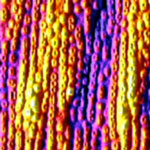 Quantum rings show unique electronic, magnetic and optical properties. These unique properties make them attractive for various applications such as magnetic memory and systems for future quantum computers. To be used in practical applications, however,the quantum rings need to be fabricated in a controlled fashion. So far, the fabrication of laterally ordered quantum rings has not been reported. Now, though, researchers have demonstrated a fabrication method to obtain large scale ordered quantum rings. The quantum rings can be simply created by partially capping quantum dots. The key to fabricating ordered quantum rings is to create ordered quantum dots.
Quantum rings show unique electronic, magnetic and optical properties. These unique properties make them attractive for various applications such as magnetic memory and systems for future quantum computers. To be used in practical applications, however,the quantum rings need to be fabricated in a controlled fashion. So far, the fabrication of laterally ordered quantum rings has not been reported. Now, though, researchers have demonstrated a fabrication method to obtain large scale ordered quantum rings. The quantum rings can be simply created by partially capping quantum dots. The key to fabricating ordered quantum rings is to create ordered quantum dots.
Jun 21st, 2012
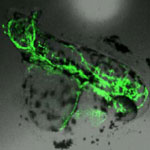 A researcher team at the California NanoSystems Institute and the University of California, Los Angeles, have found that the crystal structure of silver nanoparticles is an important determinant of their toxicity to aquatic life. The study comes amid growing concern that the proliferation of nanotechnology will result in the inadvertent release of nanomaterials into the environment. Release of silver nanoparticles is a particular concern given that over 30% of the roughly 800 nano-enabled products currently on the market contain silver nanoparticles. Prior to this study, the environmental toxicity of silver nanoparticles was thought to result mainly from release of silver ions. Nel and his team have now found that defects on the surface of silver nanoparticles can catalyze the production of reactive oxygen species that damage biomolecules within cells. This new mechanism of toxicity may be applicable to non-aquatic organisms, and extend beyond silver nanoparticles.
A researcher team at the California NanoSystems Institute and the University of California, Los Angeles, have found that the crystal structure of silver nanoparticles is an important determinant of their toxicity to aquatic life. The study comes amid growing concern that the proliferation of nanotechnology will result in the inadvertent release of nanomaterials into the environment. Release of silver nanoparticles is a particular concern given that over 30% of the roughly 800 nano-enabled products currently on the market contain silver nanoparticles. Prior to this study, the environmental toxicity of silver nanoparticles was thought to result mainly from release of silver ions. Nel and his team have now found that defects on the surface of silver nanoparticles can catalyze the production of reactive oxygen species that damage biomolecules within cells. This new mechanism of toxicity may be applicable to non-aquatic organisms, and extend beyond silver nanoparticles.
Jun 20th, 2012
 The Action Plan, presented by the EU Commission in 2004, envisioned integrating "the social dimension into a responsible technology development" and strengthening efforts related to "health, safety, environmental aspects and consumer protection". This encompassed (1) the systematic study of safety-relevant aspects at the earliest possible date, (2) integrating health- and environment-relevant aspect in research and development, (3) conducting targeted studies on toxicology and ecotoxicology and, finally, (4) adapting risk assessment approaches to nano-specific aspects in all phases of product life-cycles. The primary goal was to improve the competitiveness of European industry. The draft presented in mid-2011 for the planned research priorities2 continues this strategic focus. This article describes a selection of 22 current projects dealing with safety research as related to nanotechnology.
The Action Plan, presented by the EU Commission in 2004, envisioned integrating "the social dimension into a responsible technology development" and strengthening efforts related to "health, safety, environmental aspects and consumer protection". This encompassed (1) the systematic study of safety-relevant aspects at the earliest possible date, (2) integrating health- and environment-relevant aspect in research and development, (3) conducting targeted studies on toxicology and ecotoxicology and, finally, (4) adapting risk assessment approaches to nano-specific aspects in all phases of product life-cycles. The primary goal was to improve the competitiveness of European industry. The draft presented in mid-2011 for the planned research priorities2 continues this strategic focus. This article describes a selection of 22 current projects dealing with safety research as related to nanotechnology.
Jun 18th, 2012
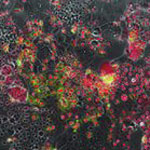 Researchers in Israel have found a unique way to affect cancer cells in a rather controllable manner. For example, they can kill these cells in various ways, or they can make them fuse together, as they like. They do so by using functionalized, 20 nm in diameter gold nanospheres and specific, intense laser pulses with a visible wavelength tuned to the plasmonic resonance of those particles. This technique may have an impact on various technologies which require sophisticated cell manipulation for therapeutic and drug development applications. What is unique about this technique is that it is highly controllable and repeatable. The structural stability of the nanospheres even after the strongest laser illumination allows them to deliver the effect over and over again, until the desired result is obtained.
Researchers in Israel have found a unique way to affect cancer cells in a rather controllable manner. For example, they can kill these cells in various ways, or they can make them fuse together, as they like. They do so by using functionalized, 20 nm in diameter gold nanospheres and specific, intense laser pulses with a visible wavelength tuned to the plasmonic resonance of those particles. This technique may have an impact on various technologies which require sophisticated cell manipulation for therapeutic and drug development applications. What is unique about this technique is that it is highly controllable and repeatable. The structural stability of the nanospheres even after the strongest laser illumination allows them to deliver the effect over and over again, until the desired result is obtained.
Jun 15th, 2012
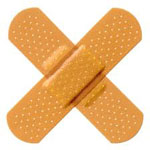 Burn injuries are one of the major global health problems. Every year 195,000 people from all over the world die because of fire alone. A burn injury may damage some or all skin layers and is caused by a hot solid, a hot liquid, or a flame. However, injuries related to electricity, radioactivity, ultraviolet radiation, chemicals and respiratory damage due to smoking are also considered as burn injuries. Besides cleaning the wound and applying various topical anti-microbial agents, wound dressings could be an effective solution in preventing microbial infections for burn care. The suitability of a burn wound dressing depends on a burn type. Conventional dressings are not efficient enough to induce haemostasis, adherence and in holding a moist environment around wound. Due to the advances in the field of nanotechnology, it is now possible to design nanofiber-based wound dressings where an electrospun-nanofibrous layer is applied to a basic support fabric material.
Burn injuries are one of the major global health problems. Every year 195,000 people from all over the world die because of fire alone. A burn injury may damage some or all skin layers and is caused by a hot solid, a hot liquid, or a flame. However, injuries related to electricity, radioactivity, ultraviolet radiation, chemicals and respiratory damage due to smoking are also considered as burn injuries. Besides cleaning the wound and applying various topical anti-microbial agents, wound dressings could be an effective solution in preventing microbial infections for burn care. The suitability of a burn wound dressing depends on a burn type. Conventional dressings are not efficient enough to induce haemostasis, adherence and in holding a moist environment around wound. Due to the advances in the field of nanotechnology, it is now possible to design nanofiber-based wound dressings where an electrospun-nanofibrous layer is applied to a basic support fabric material.
Jun 13th, 2012
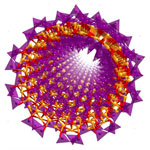 Nanotechnology is increasingly being researched for applications in the construction industry and cement is a particular focus. Apart from reducing the damaging environmental side effects of cement production, another research focus is on reinforcing concrete to improve its mechanical performance. When researchers think of nanomaterial reinforcements for concrete, carbon nanotubes come as first option. The problem with carbon nanotubes is that they are water insoluble. In order to make them compatible with water chemistry, they must be functionalized in advance. To get around this problem, a team of scientists have proposed inorganic oxide nanotubes as natural means of reinforcements of cement pastes, in view of their chemically compatibility with the cement-water system.
Nanotechnology is increasingly being researched for applications in the construction industry and cement is a particular focus. Apart from reducing the damaging environmental side effects of cement production, another research focus is on reinforcing concrete to improve its mechanical performance. When researchers think of nanomaterial reinforcements for concrete, carbon nanotubes come as first option. The problem with carbon nanotubes is that they are water insoluble. In order to make them compatible with water chemistry, they must be functionalized in advance. To get around this problem, a team of scientists have proposed inorganic oxide nanotubes as natural means of reinforcements of cement pastes, in view of their chemically compatibility with the cement-water system.
Jun 12th, 2012
 Carbon nanotubes (CNTs) show extraordinary multifunctionality, including excellent mechanical, electrical and thermal properties. To be used in practical applications, the CNTs need to be assembled into macroscale structures such as films, fibers and composites. Unfortunately, so far the properties of these macro-structures have been very poor, usually one to three orders of magnitude lower than that of individual CNTs. Low CNT structural perfection, alignment and intertube interaction are key issues that are responsible for such disappointing properties. Researchers have now demonstrated a simple, efficient and scalable strategy to make CNT films ultra-strong and conductive, in which the CNTs are well aligned and densely packed by exploiting drawable CNT arrays as precursors.
Carbon nanotubes (CNTs) show extraordinary multifunctionality, including excellent mechanical, electrical and thermal properties. To be used in practical applications, the CNTs need to be assembled into macroscale structures such as films, fibers and composites. Unfortunately, so far the properties of these macro-structures have been very poor, usually one to three orders of magnitude lower than that of individual CNTs. Low CNT structural perfection, alignment and intertube interaction are key issues that are responsible for such disappointing properties. Researchers have now demonstrated a simple, efficient and scalable strategy to make CNT films ultra-strong and conductive, in which the CNTs are well aligned and densely packed by exploiting drawable CNT arrays as precursors.
Jun 8th, 2012
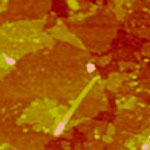 One type of biomolecules, enzymes, regulate almost all chemical reactions involved in numerous biological processes in living organisms and are also widely used in research and industry. Regulation of enzyme activity and stability is very important and has always attracted great attention. Various enzyme regulators, ranging from proteins, peptides, and synthetic organic molecules, have been discovered. Recently, nanomaterials evolve as promising alternatives for enzyme modulation. Nanomaterials provide large surface areas for biomolecule adsorption and can be engineered to present multiple surface functional groups for interacting with biomolecules, such as enzymes and/or their substrates. In a recent study, scientists started to explore the interactions between functionalized graphene oxide and serine proteases, a large family of enzymes with important biomedical and industrial applications.
One type of biomolecules, enzymes, regulate almost all chemical reactions involved in numerous biological processes in living organisms and are also widely used in research and industry. Regulation of enzyme activity and stability is very important and has always attracted great attention. Various enzyme regulators, ranging from proteins, peptides, and synthetic organic molecules, have been discovered. Recently, nanomaterials evolve as promising alternatives for enzyme modulation. Nanomaterials provide large surface areas for biomolecule adsorption and can be engineered to present multiple surface functional groups for interacting with biomolecules, such as enzymes and/or their substrates. In a recent study, scientists started to explore the interactions between functionalized graphene oxide and serine proteases, a large family of enzymes with important biomedical and industrial applications.
Jun 7th, 2012
 Quantum rings show unique electronic, magnetic and optical properties. These unique properties make them attractive for various applications such as magnetic memory and systems for future quantum computers. To be used in practical applications, however,the quantum rings need to be fabricated in a controlled fashion. So far, the fabrication of laterally ordered quantum rings has not been reported. Now, though, researchers have demonstrated a fabrication method to obtain large scale ordered quantum rings. The quantum rings can be simply created by partially capping quantum dots. The key to fabricating ordered quantum rings is to create ordered quantum dots.
Quantum rings show unique electronic, magnetic and optical properties. These unique properties make them attractive for various applications such as magnetic memory and systems for future quantum computers. To be used in practical applications, however,the quantum rings need to be fabricated in a controlled fashion. So far, the fabrication of laterally ordered quantum rings has not been reported. Now, though, researchers have demonstrated a fabrication method to obtain large scale ordered quantum rings. The quantum rings can be simply created by partially capping quantum dots. The key to fabricating ordered quantum rings is to create ordered quantum dots.
 Subscribe to our Nanotechnology Spotlight feed
Subscribe to our Nanotechnology Spotlight feed





